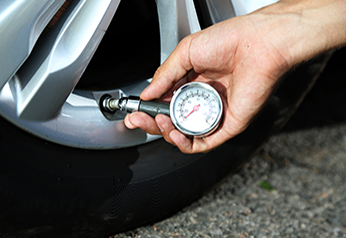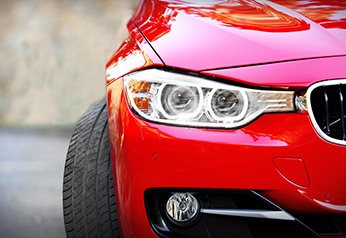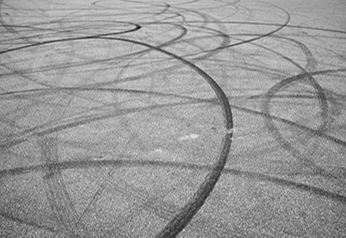
May 26, 2023
Your Guide to Wheels: Rim Width, Fitment, Offset and More!
If you're changing wheel sizes or getting a new tyre and wheel package, you're probably looking for a wheel fitment guide, rim width or rim tyre size chart to help you.
But there are many other things to consider when modifying your wheels.
To make sure you're up to the challenge, Tyroola's wheel guide will walk you through essential wheel basics, starting with this question:
What are Tyres, Wheels and Rims?
These three terms are often mistakenly interchanged. But in fact, they are three different items essential to your vehicle.
✅ Tyres are the rubber casings you fit on wheels.
✅ Wheels are the circular metal parts that attach to your car's axles.
✅ Rims are the outer edge of the wheel and help secure your tyres in place.
Top 10 Things You Need to Know About Wheels
Since its invention in 3500 BC, the wheel has evolved into a technology-packed necessity designed with various materials, functions, and capabilities.
But essentially, its purpose remains: to provide mobility. Learn more about this greatest invention of all time!
1. Why are wheels important?
• Handling
Wide wheels equate to wide tyres, which have a bigger footprint. This increased surface contact gives you an excellent response in steering and cornering.
• Comfort
If enjoying a smooth ride is your priority, go for small wheels, typically fitted with thick tyres. These tyres have bigger sidewalls, which absorb the impact of road imperfections.
• Fuel Economy
Bigger wheels need bigger tyres. With this extra weight, your engine will need to exert more effort in pushing your vehicle. All that drag and friction result in lower fuel efficiency.
• Noise Level
The bigger the wheel and tyre, the more noise it makes. But for some drivers, the noise isn't an issue, especially with the wide tyres' better grip, braking, and manoeuvrability.
• Tyre size
Tire size, width and tire diameter will all be affected by your mag wheels. You also need to check your tyre's section width or the distance between your tyre's inner and outer sidewall because it has to be compatible with the width of the rim where you'll mount the tyre.
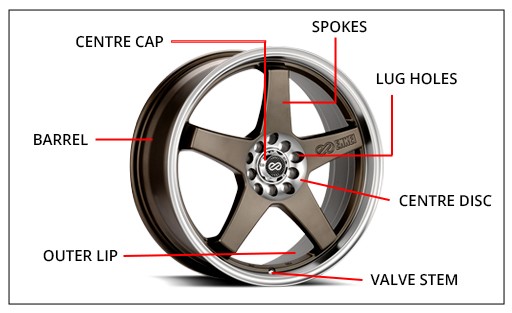
2. What are the parts of the wheel?
The modern wheel has many parts, all working together to stabilise and secure your ride. However, we break down the basic components into these:
• Hub
Found right smack at the wheel's centre is the hub. Covered by the centre cap, the hub contains a hole that attaches the wheel to the axle. The brake discs rest against the hub, ensuring that the car stops when you step on the brake.
• Centre Disc
The centre disc connects, in one way or another, to all the wheel parts, and it is the contact point to the seat of the axle and the lug holes.
• Lug Holes
Lug holes or bolt holes are the bolt circles on the centre disc. The wheel is fastened to the studs, which fit into the lug holes. The lug hole is measured to get the pitch circle diameter ((PCD). The PCD and the number of holes determine the bolt pattern, which is essential when changing wheels.
• Spokes
Running from the hub to the rim are the spokes, which protect the wheel's outer edge. Spokes have also become an essential part of wheel aesthetics—ranging from the classic five-spoke design to the more modern Y-shaped pattern.
• Rim
People often interchange rims with wheels, but actually, the rim is part of the wheel. This strong steel is curved around the hub and forms the wheel's outer edge. When fitting new tyres, your mechanics should be careful because any problems with wrong installation or a damaged rim might damage the bead of the tire.
• Outer Lip
Also called rim lip, the outer lip is usually the first wheel part damaged by a kerb or pothole. Wheels that have spokes designed farther from the outer edge are called deep outer wheels or deep-dish wheels. This design may look nice, but it prevents the spokes from protecting the outer lip, making it more prone to damage.
• Barrel
The barrel contains the drop centre and flanges that make tyre fitting possible. The tyre hugs the barrel, which gives the rubber its shape. The barrel then seals the open end of the tyre, preventing it from leaking air.
• Valve Stem
Usually made of rubber or metal, the valve stem is where you put the air to inflate the tyres. You use this to check tyre pressure manually or through your Tire Pressure Monitoring System (TPMS) system.
Also read: Tyre Pressure: A Complete Guide
3. What are wheels made of?
Wheels can come in one piece or the custom-made two- or three-piece design. You can even have them in a variety of colours including gloss black or shiny chrome. However, wheels are usually made out of:
• Steel
Steel is the stronger and more affordable option for car wheels. The only downside is its limited aesthetics because of its heavy and unwieldy nature. However, today's manufacturers are looking for ways to make steel wheels visually appealing—one of which is covering them in chrome. Commercial and off-road vehicles usually use steel wheels.
• Aluminium Alloy
Most modern wheels are formed from aluminium, magnesium, or nickel alloys. Alloy wheels may be lightweight but have a fair amount of heat resistance. Additionally, these wheels can be easily fashioned into multiple designs. Both off-road and urban vehicles use alloy wheels.
Also read: What's the Difference Between Steel and Alloy Wheels?
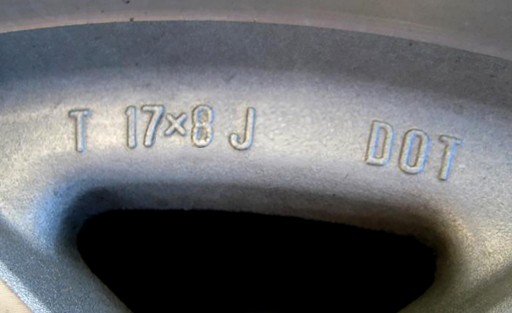
4. How do I find the wheel size?
You can look for this information engraved at the back of the wheel, in your vehicle manual, on the sticker in the driver's door jamb, or your tyre's sidewall markings.
In the photo above, you see the values 17X8, which means that the wheel is 17 inches in diameter and has a width of 8 inches. The wider the wheel, the wider the tyre you should mount on it.
But you can also measure the wheel size manually:
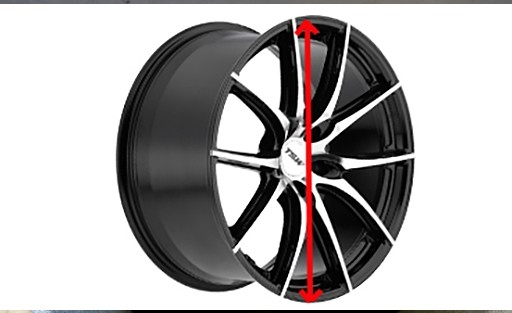
Measure your wheel diameter
• To get the wheel diameter, stretch your measuring tape across the surface of your wheel. Start with the spot on the rim where the spokes radiate and end on the opposite side.
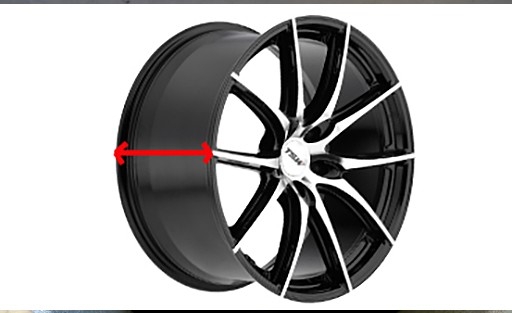
Measure your wheel's width
• To get the wheel's width, remove the wheel and place it on the floor. Put a ruler or measuring tape against the floor and measure it straight up until the seat of the upper bead.
5. Why should I consider changing my wheel size?
People change their wheel sizes for different reasons. Some do it because they own older vehicles with hard-to-find or discontinued tyres. But the majority of wheel-changers have aesthetic reasons. Many car enthusiasts upsize their wheels to boost vehicle appearance and value. Meanwhile, lowriders use smaller wheels with wider rims, letting the car sit low while moving.
Also read: Low Profile Tyres | Popular Brands | Pros & Cons
6. How do I change my wheel size?
Here are some tips if you plan to change your wheel size:
• Check if the centre bore or the central hole in the hub of your new wheel matches that of your Original Equipment Manufacturer (OEM) wheel, which is the one that came with your vehicle. If you get a new wheel with a bigger centre bore, you will have to use gap-fillers which will cost you extra.
• Make sure your new wheel has the same bolt pattern and PCD as your old one.
• Wheels come in many sizes— from 15 inches to 26 inches. Your vehicle will only allow a specific size range, which you should stick to when buying wheels. If you're unsure about the rim size guide you saw online, check with a tyre expert like Tyroola.
• When changing wheel size, you will also need to change tyre size. Doing so maintains the overall diameter of your wheel and tyre for the speedometer and odometer to function correctly. An incompatible diameter affects traction, gear settings, braking, and suspension wear. To avoid these effects, increase an inch of standing height for every inch you add to the wheel diameter.
Also read: Your Guide to Original Equipment Tyres
7. What is Wheel Offset?
Wheel offset is the measurement from the wheel's centerline to its mounting surface.
- If the centre and mounting surface are even, you have a Zero Offset.
- If the mounting surface sticks out, you have a Positive Offset.
- A Negative Offset is when the mounting surface of the wheel sits further back.
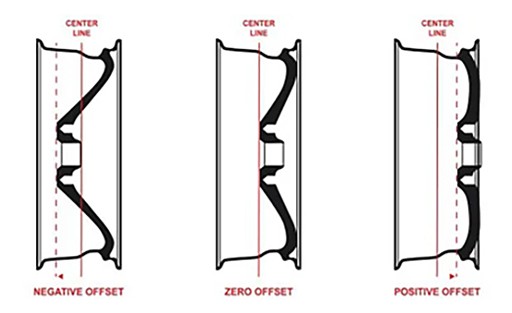
You can find the offset on the wheel after the letters ET.
A 47 value means the mounting surface is 47 millimetres in front of the centre.
Along with the proper offset, you must also choose a new wheel with compatible Backspacing, which measures the distance between the mounting surface and the wheel's inboard flange.
Getting wheels with a wrong offset and backspacing can cause poor handling, blowouts and suspension damage.
Also read: Wheel Offset: Your Complete Guide
8. Is it legal to change my wheel size?
Yes, if you stay within the wheel modification guidelines in your area. Here are some examples:
• Queensland, Victoria, Western Australia, and the Australian Capital Territory: Track width or the measurement between the centreline of two wheels sharing the same axle should not exceed 25 millimetres more than the maximum value stated by the vehicle manufacturer.
• South Australia: Track width should not exceed 15 millimetres more than the maximum value stated by the vehicle manufacturer.
• New South Wales: Wheel offset can only be up to the maximum recommended by the vehicle manufacturer. Wheels of off-road and commercial vehicles with dedicated axles for the front and rear can each have a maximum offset of 25 millimetres.
• Also, it's best to check with your insurance company if your wheel size change will affect your policy.
9. How do I maintain my wheels?
Prolong the life of your wheels with these steps:
• Drive carefully by avoiding potholes and kerbs.
• Clean your wheels regularly with soap and water. Don't use steel wool as this will scratch your wheels.
• Use acid-free detergent because acid may easily corrode your aluminium alloy wheels.
• Wheel nuts loosen eventually. Tighten them regularly with a torque wrench to boost ride safety.
• Get regular tyre rotation and wheel alignment services.
Also read: Tyroola’s Guide to Cleaning Your Tyres in Five Easy Steps
10. Is it okay to buy second-hand wheels?
Like buying second-hand tyres, buying pre-owned wheels may be risky. Unless you're an expert, you probably won't be able to tell if the wheels were damaged and then repaired. In this case, the wheel's structure has already been weakened. Aside from potentially causing accidents, a second-hand wheel is more difficult and expensive to balance.
Also read: Do My Tyres Need Balancing? A Wheel Balancing Guide
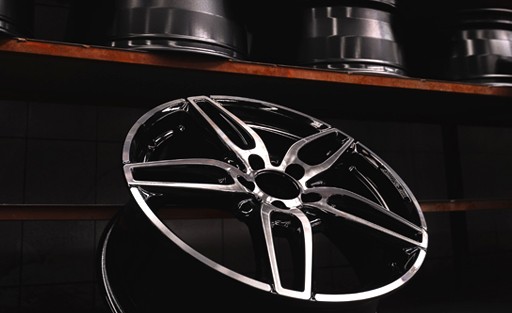
Buy the Right Wheels at the Right Price!
Stay within your budget by buying wheels at Tyroola at affordable prices! Get in touch with us if you need help with your purchase. After getting your wheels, match them with the best tyres from our wide range of premium, value, and budget tyres.
Please stop by our blog and guides for more tyre trivia and tips.
